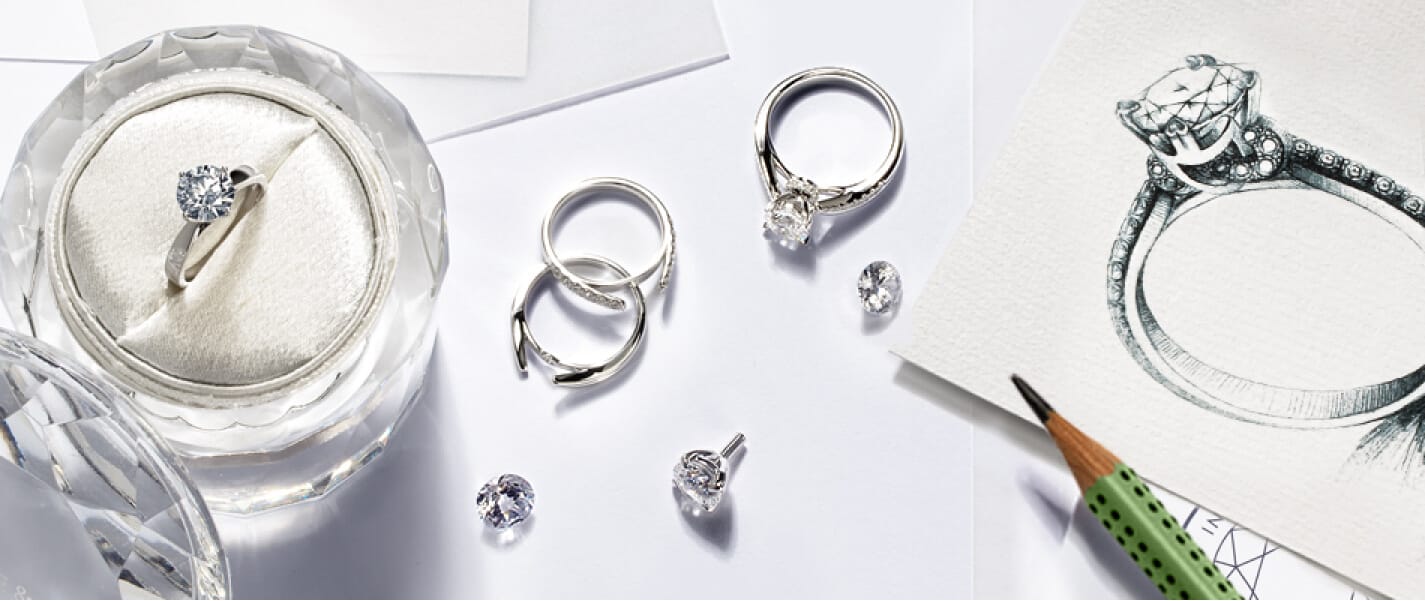
Diamonds are renowned not just for their brilliance but also for their diverse range of cuts, each enhancing the stone’s unique qualities. From the classic Round Cut to the elegant Emerald Cut and trendy Princess Cut, diamond cuts play a crucial role in determining a diamond’s sparkle and overall appearance. Let’s explore the intricacies of various diamond cuts and understand how each contributes to the allure of these precious gemstones.
Table of Contents
Introduction to Diamond Cuts
Diamond cut refers to the craftsmanship that shapes a rough diamond into a polished gemstone. It is one of the critical factors, often considered alongside clarity, color, and carat weight (the famous 4 Cs of diamonds). While all Cs are essential, the cut stands out because it directly impacts how light interacts with the diamond, influencing its brilliance and fire.
History of Diamond Cutting
Diamond cutting dates back to the Middle Ages when techniques began to evolve from simple polishing to more sophisticated facet designs. The art of diamond cutting saw significant advancements during the Renaissance, culminating in the creation of the first brilliant-cut diamonds in the 17th century. Since then, diamond cutting has continued to evolve, refining techniques to maximize a diamond’s optical properties.
The 4 Cs of Diamonds
Before delving deeper into diamond cuts, it’s crucial to understand the 4 Cs: Cut, Clarity, Color, and Carat. Of these, the cut is often regarded as the most critical determinant of a diamond’s beauty. A well-cut diamond allows light to reflect and refract through the stone, creating that mesmerizing sparkle diamonds are known for.
Types of Diamond Cuts
Round Cut
The Round Cut diamond is arguably the most popular and classic choice. Known for its unparalleled brilliance, this cut maximizes light return through its 58 facets. It’s versatile, suitable for various settings, and tends to hide imperfections well.
Princess Cut
The Princess Cut features a square or rectangular shape with numerous facets. It offers a modern alternative to the round cut, with excellent brilliance and clarity. Princess-cut diamonds are popular for engagement rings and stand out in contemporary jewelry designs.
Emerald Cut
The Emerald Cut is characterized by its rectangular shape and step cuts that create a hall-of-mirrors effect. This cut emphasizes a diamond’s clarity and transparency, making it ideal for showcasing high-quality diamonds with few internal flaws.
Asscher Cut
Similar to the Emerald Cut but with a square shape, the Asscher Cut features a smaller table and larger step facets. It exudes vintage elegance and has experienced a resurgence in popularity, particularly in engagement rings and antique-inspired jewelry.
Marquise Cut
The Marquise Cut is known for its elongated shape and pointed ends, resembling a boat or football. This cut maximizes the diamond’s carat weight, creating an illusion of greater size. It’s a flattering choice for those who want their diamond to appear larger.
Oval Cut
The Oval Cut combines the brilliance of a round cut with an elongated shape that flatters the finger. It’s prized for its sparkle and face-up size, often appearing larger than round diamonds of the same carat weight. Oval-cut diamonds are favored by those seeking a unique yet classic look.
Radiant Cut
The Radiant Cut is a hybrid shape that combines the elegance of the Emerald Cut with the brilliance of a Round Cut. It features trimmed corners and numerous facets, making it versatile for various jewelry styles and settings.
Pear Cut
The Pear Cut, also known as the teardrop cut, man made diamonds, combines a rounded end with a pointed end. It’s renowned for its symmetry and brilliance, offering a blend of the round and marquise cuts. Pear-shaped diamonds are often chosen for pendants and earrings.
Heart Cut
The Heart Cut diamond is a symbol of love and romance, featuring a distinctive heart shape with a pointed bottom. It requires skillful cutting to achieve symmetry and proportion, enhancing its brilliance and emotional appeal.
Choosing the Right Diamond Cut
When selecting a diamond cut, personal preference plays a significant role. Consider the wearer’s style and the intended jewelry piece. Each diamond cut has its unique characteristics that appeal to different tastes and occasions.
Diamond Cut Quality Grading
The Gemological Institute of America (GIA) grades diamond cuts based on criteria such as proportions, symmetry, and polish. These grades (Excellent, Very Good, Good, Fair, Poor) help buyers understand a diamond’s light performance and overall quality.
Trends in Diamond Cuts
Diamond cut trends evolve with fashion and technology. Currently, there’s a growing interest in fancy shapes like pear and oval cuts, alongside the enduring popularity of round and princess cuts. Emerging trends often emphasize custom cuts and unique designs.
Conclusion
In conclusion, diamond cuts are not merely about shape but about maximizing a diamond’s brilliance and beauty. Whether you prefer the timeless elegance of a round cut or the modern allure of a princess cut, understanding diamond cuts allows you to make an informed choice when purchasing diamond jewelry.






